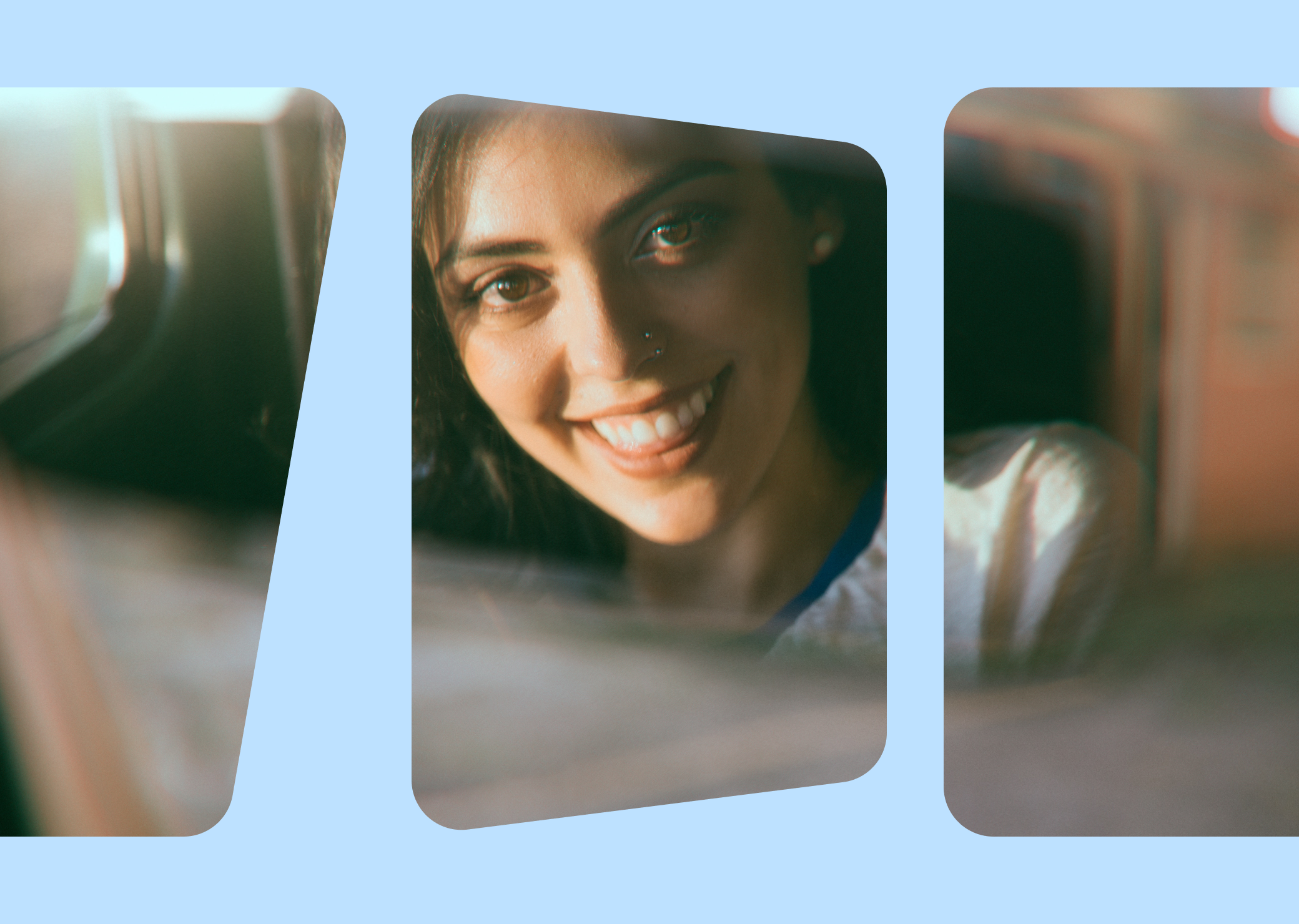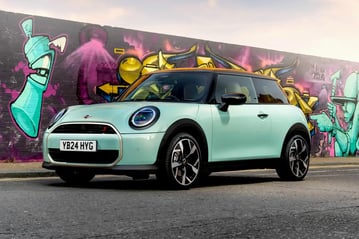- Carmoola
- Blog
- Tips and Advice
- How to Check If Your Eyesight is Fit for Driving
- 🗞 Tips and Advice
- Last updated: Jan 24, 2022
- 5 Min Read
How to Check If Your Eyesight is Fit for Driving
Written by

Verified by


See how much you can borrow in 60 seconds
| Representative Example | |
|---|---|
| Loan amount | £10,000 |
| Interest rate | 13.9% APR |
| 54 payments of | £246 |
| Total cost of credit | £3,284 |
| Option to purchase fee | £1 |
| Total payable | £13,285 |
Good eyesight is important in ensuring you are safe whenever you’re out on the road. Checking that your eyesight is fit for driving is not only for your own safety but for other drivers and pedestrians as well.
Don't forget, there are minimum sight levels that you need to meet in order to drive, too. When was the last time you had your eyes checked?
If you’ve been experiencing difficulties in seeing clearly while driving, then it’s definitely time for an eye checkup.
Is my eyesight fit for driving?
Our eyesight can deteriorate due to age, accidents, or medical conditions. It’s crucial that poor vision is corrected by wearing contact lenses or glasses whenever necessary, especially when you’re driving.
Short-sightedness is not the only problem to worry about. If your field of vision, ability to see at night, contrast sensitivity, and other visual functions are impaired, it can affect your capability of driving safely.
Your eyesight can be tested in three different ways: upon taking your driving test, during a police roadside eye test, and when you visit your optician for a checkup.
Eyesight Check During Driving Test
When taking a driving test, your examiner will ask you to read the number plate of the vehicle parked in front of you.
It is 20 metres or about the length of five cars away from you, and you should be able to read the number plate correctly.
Can I wear glasses or contact lenses?
If you have glasses or contact lenses, it’s perfectly fine to wear them during your driving test. But what if you can’t read the number plate?
In this case, then you immediately fail the driving test and the provisional licence you have will be revoked.
Reapplying for a Driver's Licence
You may reapply for a driver’s licence. However, the DVLA will require you to get an eyesight test from the DVSA. This test will be carried out at the driving test centre.
If you pass the eyesight test, then you will proceed to the driving test, where you will be asked to read the number plate at 20 metres again.
20-metre Eye Test
If you’re successful in getting your driver’s licence, then remember that you have the responsibility to make sure you pass that 20-metre eye test for as long as you’re driving.
It’s also vital that you can clearly see out of the corners of your eyes during nighttime driving and that you do not have double vision.
Police Roadside Eye Test
If you drive with poor eyesight, the police may ask you to pull over and submit to a roadside eye test. This is to ensure that you’re competent to drive safely and that you’re not a danger to other road users.
If you get a roadside eye test from the police and you do not pass, then you will be considered unfit to drive, and you could be banned from driving.
What if you refuse to submit to the eye test? It’s important to cooperate with the authorities because if you do not, then you will be found guilty of an offence.
Eye Checkup with Your Optician
It’s advisable to have an eyesight test every two years. If you’ve been prescribed to wear glasses or contact lenses while driving, then always remember to do so.
This will keep you safe and reduce the risk of getting into an accident with other road users. If you have noticed changes in your eyesight, then it’s essential that you get your vision checked even if it hasn’t been two years since your last visit with your optician.
What’s great about an eye checkup is that it’s inexpensive. You might even get a free test from your local optician, so be sure to check any deals, discounts, and other offers. All eye tests are currently free for those over 60.
Get Your Eyes Checked Every Two Years
What if your eyesight still feels alright after two years? This is good news, but even so, do make it a point to still get an eye checkup.
This is to ensure that you don’t have any eye conditions that may affect your driving. Some medical conditions can also be picked up during an eye test, so it's definitely a good idea to see your optician regularly.
Do I need to wear glasses?
Sometimes, we may feel that our vision is fine, but our eyesight can deteriorate gradually as we age or if we have a medical condition.
Some people experience sudden changes and immediately know that there’s something wrong with their eyesight.
Whatever the case might be for you, it’s always better to get an eye checkup with your optician so you’ll have peace of mind that you can drive safely.
Here are some signs that you might need to wear glasses.
- Difficulty in seeing clearly at night or when the lights change
- Seeing halos around lights
- Requiring brighter light to see clearly, like in reading
- Experiencing double vision
- Feeling pressure behind your eyes
- Unusual headaches
- Experiencing eye strains
If you experience some or all of these symptoms, then the best thing to do is to set an appointment with your optician immediately so you can get an eye test.
Do not drive until you’ve been prescribed glasses or until the optician confirms that your eyesight is still suitable.
Takeaway
Notify the DVLA if you experience sharpness of vision, blind spots in one or both eyes, tunnel vision or if you’ve received treatment for your retina and your doctor has advised you to refrain from driving.
If you’re unsure whether your eyesight is good for driving, it’s best to avoid getting behind the wheel for now.
Get an eye test from your optician so you’ll have peace of mind knowing that you won’t be a danger to yourself, your passengers, and other road users whenever you drive. 👍
See how much you can borrow in 60 seconds
| Representative Example | |
|---|---|
| Loan amount | £10,000 |
| Interest rate | 13.9% APR |
| 54 payments of | £246 |
| Total cost of credit | £3,284 |
| Option to purchase fee | £1 |
| Total payable | £13,285 |
Related articles
What Are the Top 5 Used Car Websites in the UK?
Thanks to the internet, searching for a used car in the UK is easier than ever before. You can simply head online, visit a used...
What Is GMFV in PCP Car Finance? Guaranteed Minimum Future Value Explained
GMFV, or Guaranteed Minimum Future Value, is the amount your lender estimates your car will be worth at the end of your PCP...
Does Financing a Car Build Your Credit?
Financing a car can build credit when you make payments on time, but it can damage your score if you miss payments or take on...

.webp?width=832&height=592&name=customer-support%20(1).webp)










.webp?width=400&height=285&name=online-shoppers-with-dog%20(1).webp)


.jpg?width=500&height=356&name=Vintage%20car%20going%20to%20an%20old%20town-1%20(1).jpg)





